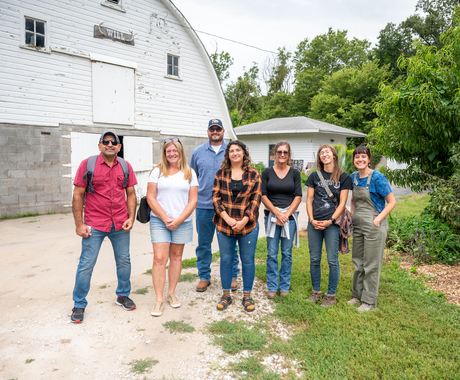Anna Johnson, senior policy program associate, [email protected], 515.215.1294; or Rhea Landholm, brand marketing and communications manager, [email protected], 402.687.2100 ext 1025
LYONS, NEBRASKA – Many farmers and ranchers value the opportunity the Conservation Stewardship Program (CSP) offers to enhance their existing conservation efforts, according to a recent survey by the Center for Rural Affairs. Eighty-seven percent of more than 800 respondents, all living in an area with a strong agricultural presence, said CSP should be supported as a priority in the farm bill.
Today, the Center for Rural Affairs released a report, “A farmer’s view: a look at the Conservation Stewardship Program,” which analyzes these survey results and examines the efficacy of CSP in Iowa, Kansas, Nebraska, North Dakota, and South Dakota.
CSP is the largest federal conservation program by acreage that the U.S. Department of Agriculture, Natural Resources Conservation Service administers. The program differs from other working lands programs in that it rewards farmers and ranchers for performing conservation and also provides a path for them to increase levels of conservation for their entire operation.
“The reported positive changes to soil health, water quality, and other natural resources indicate the program is working as it should,” said Cora Fox, Center for Rural Affairs policy program associate. “Conservation enhancements chosen by farmers and ranchers are meant to address priority resource concerns that are not confined to a single farm or ranch, but rather impact the surrounding region. With enhancements that reduce erosion and prevent water runoff, CSP helps protect our most valued, and shared, resources.”
The states selected were chosen based on their high rates of CSP contracts and acres enrolled in the program, as well as their role as agriculture-centric states. Data was acquired from farmers and ranchers regarding their enrollment and satisfaction with the program. The survey was distributed to 4,799 farmers across five states and 829 usable responses were received.
“The survey results show with CSP, farmers and ranchers can access greater levels of conservation, see advantages of those practices, and value the education and financial support to help achieve these conservation benefits,” said Fox. “This demonstrates the reassuring conclusion that CSP is working as it should.”
For more information, and to view the report, visit cfra.org/publications.




